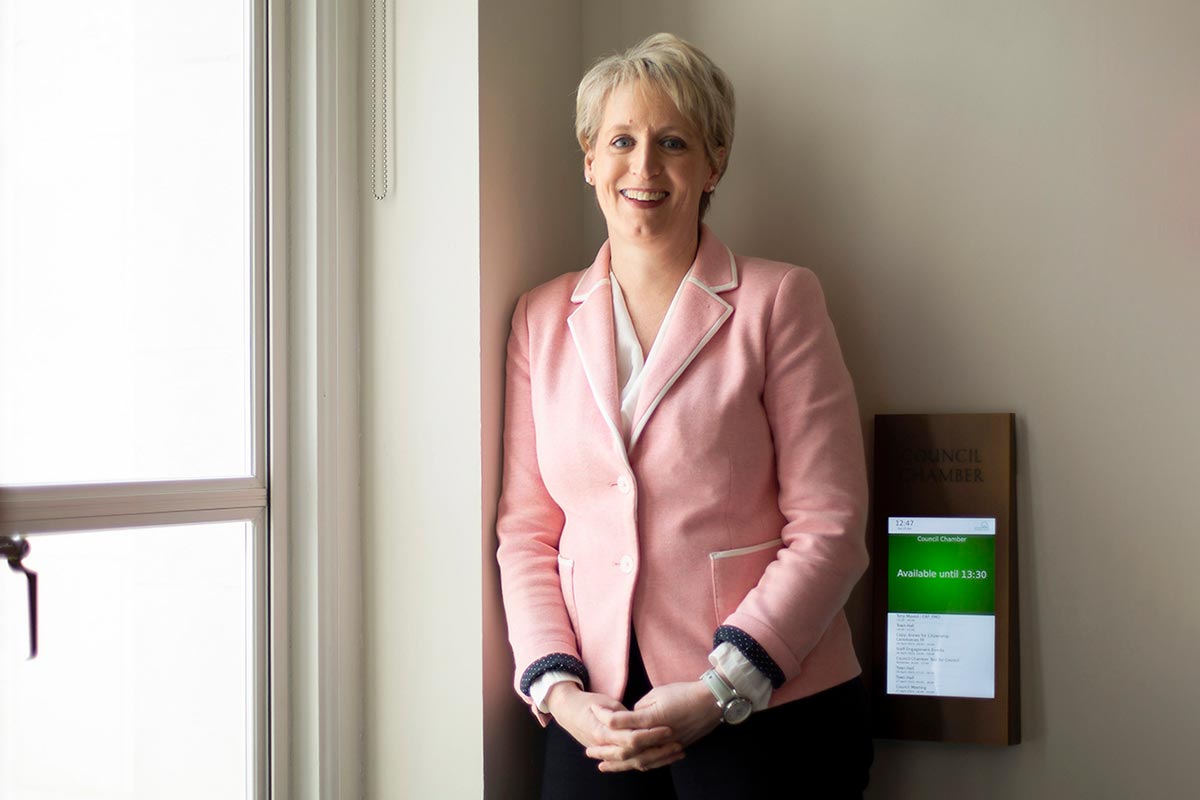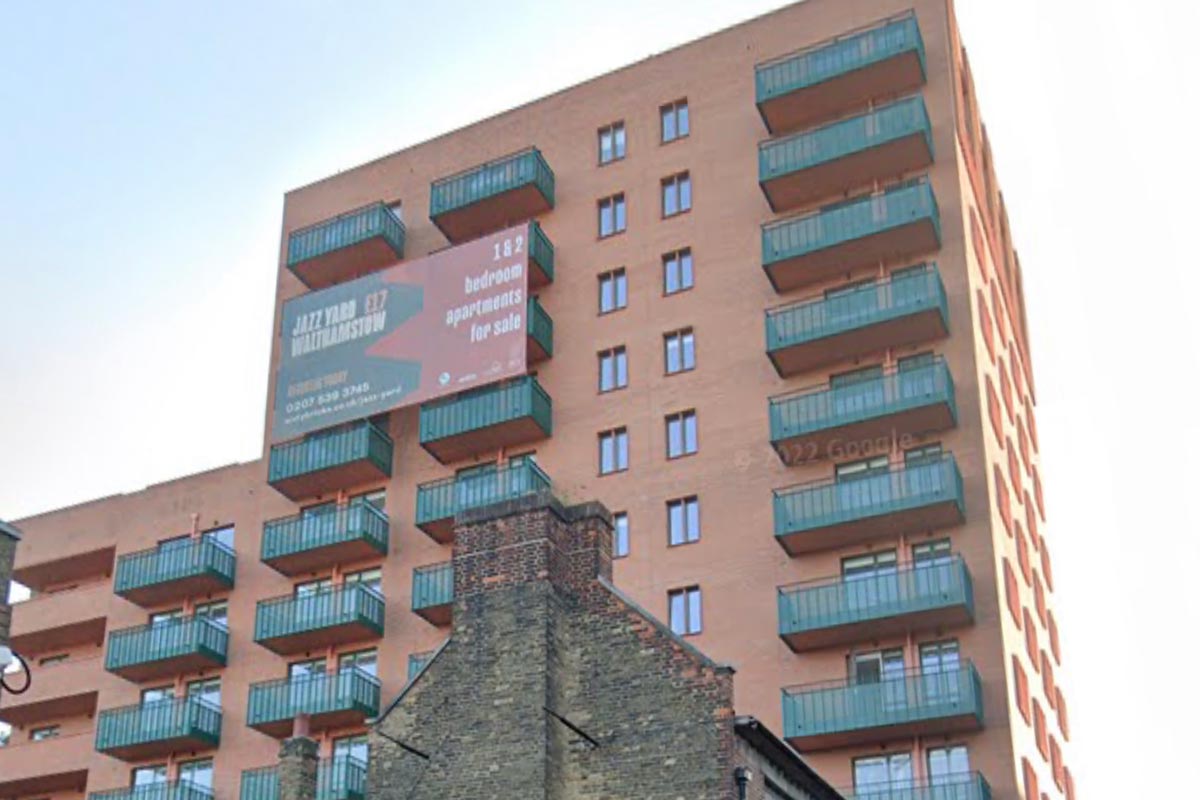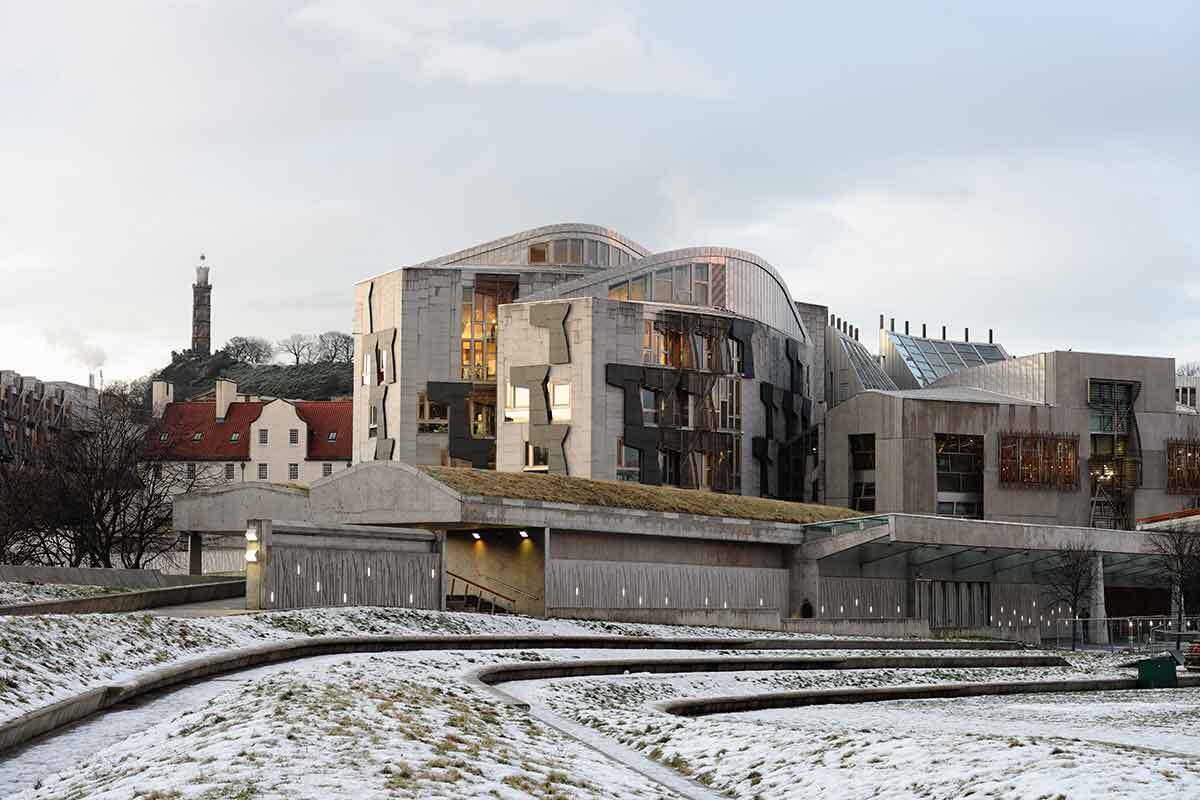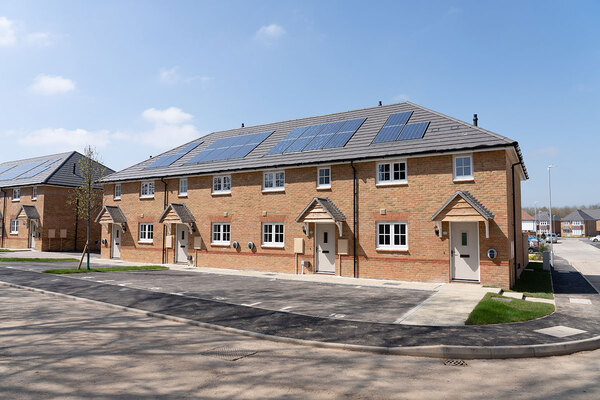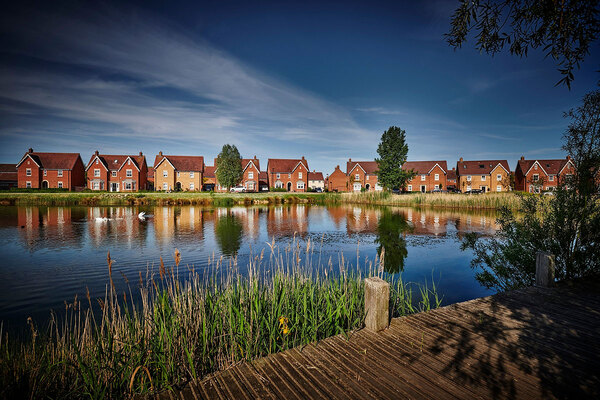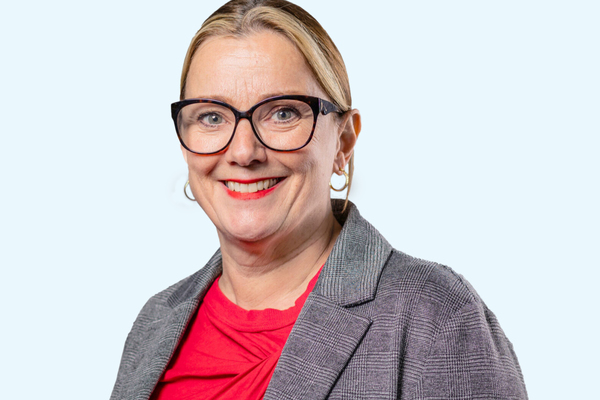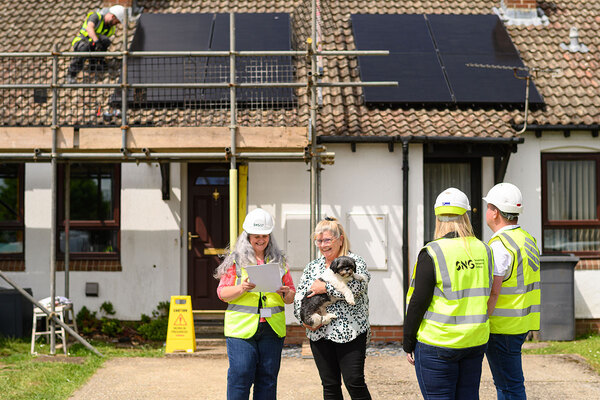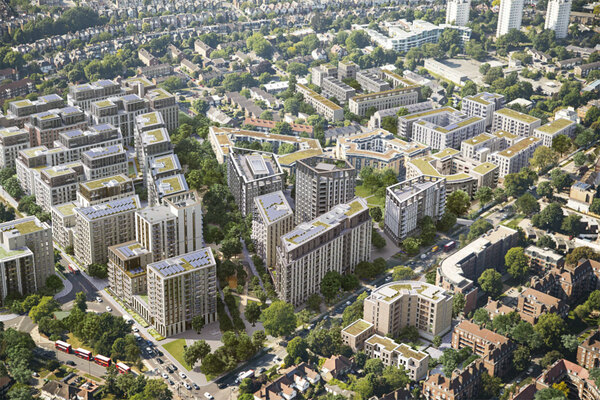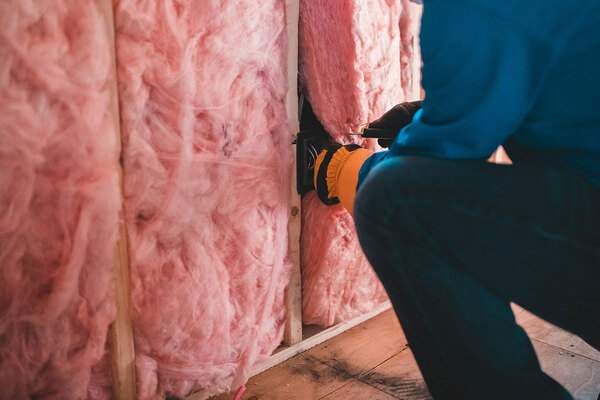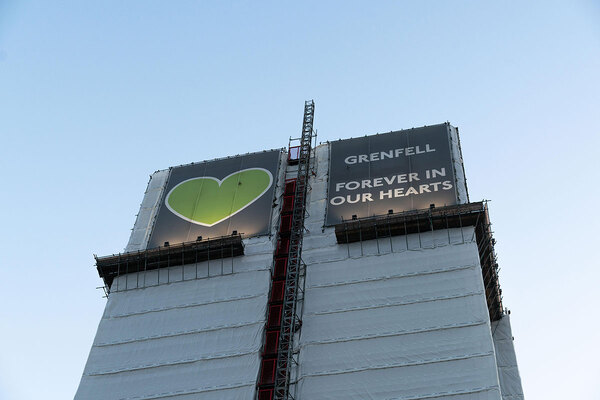You are viewing 1 of your 1 free articles
The woman who wants to build the world’s best council housing
Emma Osmundsen has joined council-owned housing developer Sixty Bricks with big ambitions for a renaissance of council housing, but this time with Passivhauses fit for the future. Jess McCabe reports. Photography by Tim Foster
“I want to build the best council homes in the world,” says Emma Osmundsen.
That is quite an ambition – and one that Ms Osmundsen has recently brought to Waltham Forest Council, which she joined in December as chief executive of its housing development company Sixty Bricks.
She has been brought in to help achieve Sixty Bricks’ major ambitions to build 5,000 homes in 15 years. And, specifically, Ms Osmundsen has another agenda: to transform that pipeline of new homes into highly energy-efficient Passivhauses.
Inside Housing talked to her on video call from Waltham Forest’s town hall, to find out more about how she is planning to turn this ambition into a reality.
To back up a little bit, it is impossible to talk about Sixty Bricks’ plans without thinking about what is going on in the wider world of council housing development – in particular, the model of Sixty Bricks, as a council-owned housing development company.
Company closures
Only a few years ago, the idea of councils setting up companies to build homes glittered with promise of a council housing renaissance. Rather than sell off public land, councils could build again. Profits from market sale homes could help bring in income and subsidise a new generation of council building. Rabina Khan, Tower Hamlets’ former cabinet member for housing, wrote a piece in The Guardian in 2017 which summed up the mood. It was headlined: “The private sector has failed. Only councils can be trusted to build the homes we need”.
But then, Croydon Council went under. Many fingers pointed to its failed development company Brick By Brick – the council had lent the firm £200m. The whole model seemed shaky. Merton Council was so worried, the local paper reported, that it scrapped its development company Merantun before a single house was built. Homes for Lambeth was once expected to build 4,000 homes by 2025 – it was wound up this year having completed only 63. Liverpool City Council’s vehicle was expected to build 10,000 homes, but was shut after only 18 months, having built only 18.
Asked about this, Ms Osmundsen brings up counterpoints. “We’re not particularly good at showcasing the phenomenal success of the many, many, many council development companies that now exist,” she says. “Unfortunately, yes, there have been some companies that have fallen by the wayside. And there have been lots of lessons learned from that. But… if we’re not prepared to take some risk, if we’re not prepared to intervene where the markets are failing, then really, what are we here for?”
Some of the failed companies, she suggests, might have succeeded if they had been given time. Most development companies do not make money “from day one” because of “the time lag of building enough homes to generate enough income”, she notes. “If you look at the private sector, far more development companies have failed with much greater catastrophic impact. But of course, they’re not open to the level of scrutiny that the public sector is.”
“Switching our market sale homes to shared ownership just seemed eminently sensible given the housing market and economic conditions in the UK at present”
Has this caused Waltham Forest’s commitment to Sixty Bricks to wobble? From talking to Ms Osmundsen, it seems not. If anything, she is hoping to build more homes than the 5,000 in Sixty Bricks’ business plan.
Sixty Bricks, which was set up in 2016, is aiming to deliver 20% of the 27,000 homes that Waltham Forest hopes will be built in the borough, and is targeting in its local plan. Of the 299 homes built so far – what Sixty Bricks refers to as Phase 1 – all have been on council land. Phase 2 will also all be on public land. Yet after we speak, news broke that Waltham Forest Council is aiming to buy 13 unsold homes on its Jazz Yard development from Sixty Bricks, and convert them from market sale to shared ownership. Ms Osmundsen says: “Switching our market sale homes to shared ownership just seemed eminently sensible given the housing market and economic conditions in the UK at present.”
At least 50% of the homes for Phase 1 and Phase 2 will be affordable housing, Ms Osmundsen explains, while “the council are committed for as much of that to be social rent as possible”. The affordable housing will be split between 70% social rent and 30% shared ownership. Sixty Bricks has ambitions to build more broadly too, not just taking forward council sites, from Phase 3 onwards. Sixty Bricks would seek to exceed the minimum of 35% affordable housing required by policy on these sites too, she adds.
So who is the woman who is going to deliver these plans? The start of Ms Osmundsen’s career, she says, was “quite conventional”. She started as a chartered surveyor back in the 1990s, then went on to work for a number of private developers. Then, in 2009, came a turning point.
“I kind of reached a crossroads in my life,” she says, and began reflecting on her childhood. “I spent all my summer holidays with my grandparents. Both sets of my grandparents, they lived in great council houses in Swansea – you know, the good old semi-detached, a great big garden, big established estates.
“That provided my grandparents with homes for life that then went on to be bought, dare I say it, by my parents. That then gave them a degree of wealth that I then had that benefit of,” she says.
“But they were more than a home. I’ve never experienced the sense of community that I did when I spent my holidays in those estates. [I thought], I’ve got this skill set that I want to apply into the public sector.”
In 2009, Ms Osmundsen set out to do just that, getting a job at Exeter City Council.
“I wanted specifically to build council houses,” she recalls. “We hadn’t been building council houses on any sort of scale, since probably we stopped building in the ’80s.” It is at this point that Ms Osmundsen says the words we began this story with: “I set myself the remit:
I want to build the best council homes in the world.” She then helped Exeter set up its own housing development company. It became Exeter City Living, which according to reports last year aims to build 1,000 homes.
“It sounds a bit kind of cheesy,” she adds. “And I didn’t really articulate this obviously to anyone at the time, but inwardly [I was thinking] how can we recreate that community, that transformational change for people in the 21st century?”
“Quietly, under the radar, I started pioneering these real exemplar Passivhaus council homes. Just really to experiment and see, could we do things better?”
Ms Osmundsen has made her name building council Passivhauses – but, she says, she came to the concept backwards. Exeter wanted to start its building programme slowly, with a focus on small infill developments, which would ideally create options for older tenants to downsize.
“It wasn’t a eureka moment,” she says. “It was just going back to the client’s brief of stipulating how would you define a high-performing home? How do I entice these families, older people that have been living in their council houses for 30, 40 years? You could entice them through by saying, ‘Well, I know you love your council house, and I know the council house is good, but actually, it’s really expensive to heat.’” This, she adds, was before the current energy crisis pushed energy prices so high and caused fuel poverty to sky-rocket.
Ms Osmundsen says: “My focus then was really creating homes that were the most healthy, the most comfortable, completely eradicated fuel poverty, and homes that really lift your heart.
“Quietly, under the radar, I started pioneering these real exemplar Passivhaus council homes. Just really to experiment and see, could we do things better? And then over time, we just grew confidence and schemes got bigger and bigger.” Exeter was among the first councils to build Passivhaus, starting back in 2009.
“We’ve had people living in their homes for 12, 14 years and they never switch the heating on. You come back into your home and you could have been abroad for six months and it’s not cold,” Ms Osmundsen says.
‘High-performing homes’
So when Ms Osmundsen came to Sixty Bricks in December, she had the ambition to do similar work in Waltham Forest. Part of what made her experience so valuable to Waltham Forest must surely have been what she achieved with the cost of Passivhaus. In those early exemplar projects, she says, Passivhaus cost about 20% above the costs of just meeting building standards – which Exeter was able to achieve because of specific grants from the Homes and Communities Agency (the predecessor to Homes England). But, she says, Exeter quickly got to work in cutting these costs.
“If you’ve got a good designer that understands building physics and form factor and orientation, what we’ve been able to demonstrate is you can actually virtually eradicate the cost of building Passivhaus,” she says. A low-rise block of flats in Exeter, she says, was coming in 4% cheaper than “building regulation-compliant” equivalents.
So how is she applying this knowledge to Sixty Bricks? Ms Osmundsen characterises Sixty Bricks’ homes built so far as “high-performing homes”. The next step is to take the company’s pipeline to Passivhaus.
One project in the pipeline is, she says, going to be built to “Passivhaus principles” – meaning they are very energy-efficient buildings, but might not achieve certification. Another 100-home project on Church Lane is due to go to planning in October. This is going to be Passivhaus.
Ms Osmundsen says that going for certification is important because it focuses minds on the construction site, and generally improves performance and delivery. “If you are under contract to deliver to a specific specified standard, you don’t cut corners, because you can’t afford to,” she notes.
“Even parking energy to one side, we are seeing the unintended consequences of not investing in our fabric. And we’re seeing chronic issues with mould, with condensation”
These are, she says, “turbulent times”. “These sort of times you need bravery,” she says. “Waltham Forest, they’re ambitious and they’re brave. And they know that if they stop [building], then you’re in trouble because your housing need is always going to increase.” The question, she says, is: “How can you be brave enough to say, we need to continue building?” The council’s report on those homes it is buying to convert to shared ownership said that Sixty Bricks is “short of its income target for financial year 2022-23 by £5.4m”.
Is there a risk that the economic headwinds facing the sector, and housebuilding in general, will cause Waltham Forest to lessen its enthusiasm for delivering to those high, Passivhaus standards – even if costs can be contained? Ms Osmundsen says that Waltham Forest is committed.
But, in general, she says there is a risk that the sector cuts ambitions and costs. “We’re in a housing crisis, we want more affordable homes, we want more homes full stop,” she says. “There’s a real risk that we’ll dumb down, because all of a sudden, it’s a numbers game. And quality really starts to diminish… we need a roof over somebody’s head.”
If this does happen, Ms Osmundsen argues, it would be a mistake. “We know people are building homes today which will need retrofitting within a decade.”
Passivhaus has benefits in terms of air quality and avoiding problems like condensation and mould, she adds. “Even parking energy to one side, we are seeing the unintended consequences of not investing in our fabric. And we’re seeing chronic issues with mould, with condensation. And this is not just in old homes. This is happening in homes that have been built in the ’80s, ’90s and 2000s. When are we going to stop? When can we just turn up the dial and say good is not good enough? We need great homes.”
Sign up for our development and finance newsletter
Already have an account? Click here to manage your newsletters
